-
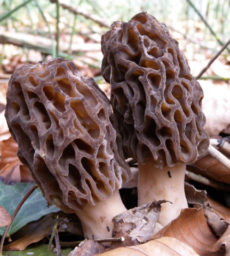
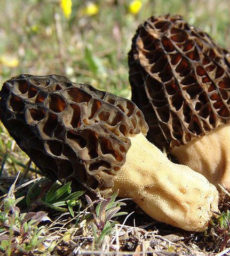
Black Morel Spores (Morchella Importuna)
$14.95 – $29.95Cultivation Difficulty: Difficult
Type: Edible
Substrate: Grass seed, hardwood sawdust
Colonization/Fruiting Temperatures: 70-75F/40-60F
Sclerotia Formation Temperature: 60-65FLandscape morels are considered good candidates for cultivation since they don’t appear to be dependent on seed plants for fruiting. Morchella importuna is fairly common in the northwest of North America with unconfirmed reports in the Midwest and East. It is usually found in gardens, planters and landscaping sites in early spring.
The morel strain provided here was isolated from a wild Oregon, USA specimen and successfully fruited in a disturbed garden habitat in March 2004. This sample was previously provided as “Morchella elata group” but was recently confirmed to be Morchella importuna through genetic analysis.
Currently, there is no reliable method of fruiting morels under laboratory conditions. We offer this species for experimental purposes and make no guarantees beyond the viability of the culture and its ability to form sclerotia. Outdoor cultivation is recommended for the highest chance of success.
See also Morchella rufobrunnea – Yellow Landscape Morel.
The formation of sclerotia is widely accepted as the preliminary stage to the formation of morel mushrooms. A morel sclerotium is a hard mass of compressed mycelium that forms underground during the late spring and summer. It is thought to be a dormant structure in the morel lifecycle that allows it to over-winter. The sclerotium can then quickly spring to life with the warm spring rains.
Current successful cultivation method:
Using a presealable MycoBag(TM) with self-healing injection port, place a cup or so of soaked and well drained grass seed on the bottom near the injection site and a thick layer of moist hardwood sawdust on top. Seal with an impulse sealer and sterilized at 15psi for 2-3 hours. After cooling, inject the culture syringe into the grass seed and let it colonize at 60-65F for at least 3 weeks. Do not mix the grass seed with the sawdust. The morel mycelium will feed on the grass seed and use that energy to grow sclerotia in the nutrient poor sawdust. There should be plenty of the small orange sclerotia visible before planting outside. In November-January, dig a small depression in a shady garden area and sprinkle it heavily with garden lime. Dump out the sawdust layer into the depression and cover it with garden soil mixed with a few handfuls of lime and ignore it. With luck, morels will appear in the spring. Alternative methods recommend mixing wood ash with the sclerotia as black morels are often associated with burn sites. This was not attempted with this strain.
The above method can be attempted with jars but the grass seed should be placed on top of the sawdust instead of the bottom.
We would be interested in any reports of success with this culture.
-
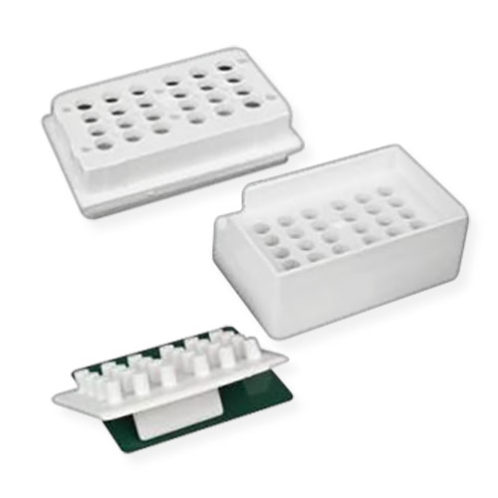
Capsule Filling Machine
$29.86 – $59.78Capsule Filling Machine
Capsule Filling Machine Quickly fill up to 24 capsules at once using this capsule filling machine. Simply insert the empty halves of your gelatin capsules, add your powders and you’re good to go!
Capsule Filling Machine Works with “Size 0” capsules.
Cluster headaches are a series of relatively short but extremely painful headaches every day for weeks or months at a time. You tend to get them at the same time each year, such as the spring or fall. Because of their seasonal nature, people often mistake cluster headaches for symptoms of allergies or business stress.We don’t know what causes them, but we do know that a nerve in your face is involved, creating intense pain around one of your eyes. It’s so bad that most people can’t sit still and will often pace during an attack. Cluster headaches can be more severe than a migraine, but they usually don’t last as long.These are the least common type of headaches, affecting less than 1 in 1,000 people. Men get them more than women do. You usually start getting them before age 30. Cluster headaches may disappear completely (go into remission) for months or years, but they can come back without any warning. What Happens
You get a cluster headache when a specific nerve pathway in the base of your brain is activated. That signal seems to come from a deeper part of the brain called the hypothalamus, where the “internal biological clock” that controls your sleep and wake cycles lives.
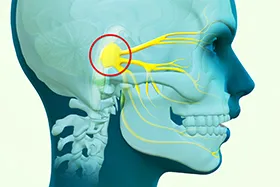
The nerve that’s affected, the trigeminal nerve, is responsible for sensations such as heat or pain in your face. It’s near your eye, and it branches up to your forehead, across your cheek, down your jaw line, and above your ear on the same side, too.
An underlying brain condition, such as a tumor or aneurysm, won’t cause these headaches.
Characteristics of Cluster Headaches
There are a few things that set this type of headache apart. They include: Capsule Filling Machine
- Speed: Cluster headaches generally reach their full force quickly — within 5 or 10 minutes.
- Pain: It’s almost always one-sided, and it stays on the same side during a period, the time when you’re getting daily attacks. (When a new headache period starts, it might switch to the opposite side, but that’s rare.) It’s often described as having a burning or piercing quality. It may be throbbing or constant. You’ll feel it behind or around one eye. It may spread to your forehead, temple, nose, cheek, or upper gum on that side. Your scalp may be tender. You can often feel your blood pulsing.
- Short duration: Cluster headaches usually only last 30 to 90 minutes. They can be as short as 15 minutes or as long as 3 hours, but then they disappear. You’ll probably get one to three of these headaches a day. But some people have as few as one every other day, while others get them up to 8 times a day.
- Predictable: Attacks seem to be linked to the circadian rhythm, your body’s 24-hour clock. They happen so regularly, generally at the same time each day, that they’ve been called “alarm clock headaches.” They might even wake you up an hour or two after you go to bed. Nighttime attacks can be more severe than the daytime ones.
- Frequent: Most people will get daily headaches for 2 weeks to 3 months; in between these periods, they’ll be pain-free for at least 2 weeks.
Symptoms
The pain usually starts suddenly. When that happens, you may notice:
- Discomfort or a mild burning sensation
- Swollen or drooping eye
- Smaller pupil in the eye
- Eye redness or watering
- Runny or congested nose
- Red, warm face
- Sweating
- You’re sensitive to light
Cluster headaches are more common in people who smoke or are heavy drinkers. During a cluster period, you’ll be more sensitive to alcohol and nicotine — just a bit of alcohol can trigger a headache. But drinking won’t trigger one during headache-free periods.
Possible Causes and Triggers
When you’re in the middle of a cluster period, any of these can bring on a headache:
- Cigarette smoke
- Alcohol
- Strong smells
Treatment
You have several options when it comes to treating these headaches: Use this Capsule Filling Machine to fix your migraine problems!
Alacabenzi Spores
Alacabenzi Spores, mushrooms and their spores are rare. Potent and sought after, these psilocybe cubensis magic mushrooms are a real gem. Spores from the Alacabenzi Spores mushroom are available here at SporeStore.com because you asked for them! Find both mushroom spore syringe and also mushroom spore prints. This psilocybe cubensis magic mushroom was first discovered on a farm growing in a pile of dung and straw as its mushroom substrate in Alabama. There is no psilocybin or psilocin contained within magic mushroom spores, making them completely legal to purchase and possess in most jurisdictions throughout the USA. Make sure to check your local laws before ordering or growing mushrooms. The original Alacabenzi Spores mushroom spores’ genetics in both spore print and spore syringe from the true Mushroom Spores Alcabenzi psilocybe cubensis mushrooms from Alabama are brought to you by SporeStore.com, the leader in mushroom spores.
Spores from this strain are rare and it’s a decent spore depositor.
Alacabenzi Spores magic mushrooms are easy to grow. Check your local mushroom growing laws. Growing mushrooms for identification and taxonomy purposes? We have your spores!
In addition to the Mushroom Spores Alcabenzi spores, here are some other mushroom spores that you may be interested in reviewing: Golden Teacher Spores mushroom magic spores, B+ mushroom spores which is also called B Plus mushroom spores, PES Amazonian mushroom spores, PES Hawaiian mushroom spores, Ecuador spores
Furthermore check out our new Mushroom Grinder!
-
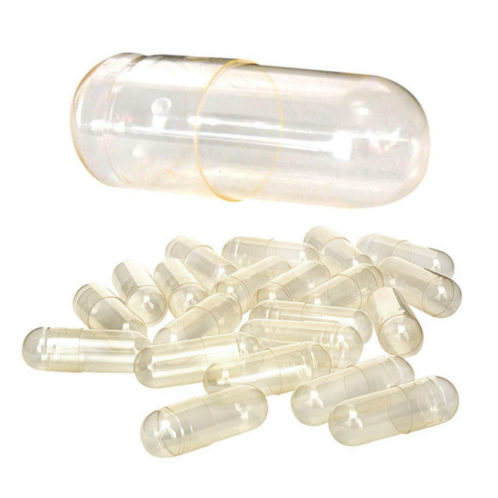
Gelatin Capsules
$13.97 – $34.92Gelatin Capsules
Gelatin Capsules that you are purchasing here on SporeStore are of high quality vegan safe substrate. These Gelatin Capsules are extremely easy to work with. Make sure to stock up because they’re going fast!
Gelatin Capusles Size 0 are super high quality!
- Gelatin Capsules are SAFE AND EASY – Make your own supplements with pure, natural ingredients.
- These are SIZE 0 Capsules
- PURE INGREDIENTS: PurecapsUSA FDA-approved, pharmaceutical-grade gelatin capsules contain only beef gelatin and purified water and are free of preservatives, sodium lauryl sulfates, ethylene oxide or sulfites. All of our capsules are GMO-free, free of BSE/TSEs. (Bovine/Transmissable Spongiform Encephalopathies), hypoallergenic and are certified Kosher and Halal.
- Fast dissolving and easily digestible – NOTE: Not for liquids
- SATISFACTION GUARANTEED- We stand behind our products and our high standards of customer service.
-
Capsule Filling Machine
Capsule Filling Machine Quickly fill up to 24 capsules at once using this capsule filling machine. Simply insert the empty halves of your gelatin capsules, add your powders and you’re good to go!
Capsule Filling Machine Works with “Size 0” capsules.
Gelatin Capsules and Cluster headaches are a series of relatively short but extremely painful headaches every day for weeks or months at a time. You tend to get them at the same time each year, such as the spring or fall. Because of their seasonal nature, people often mistake cluster headaches for symptoms of allergies or business stress.We don’t know what causes them, but we do know that a nerve in your face is involved, creating intense pain around one of your eyes. It’s so bad that most people can’t sit still and will often pace during an attack. Cluster headaches can be more severe than a migraine, but they usually don’t last as long.These are the least common type of headaches, affecting less than 1 in 1,000 people. Men get them more than women do. You usually start getting them before age 30. Cluster headaches may disappear completely (go into remission) for months or years, but they can come back without any warning. What Happens
You get a cluster headache when a specific nerve pathway in the base of your brain is activated. That signal seems to come from a deeper part of the brain called the hypothalamus, where the “internal biological clock” that controls your sleep and wake cycles lives.

The nerve that’s affected, the trigeminal nerve, is responsible for sensations such as heat or pain in your face. It’s near your eye, and it branches up to your forehead, across your cheek, down your jaw line, and above your ear on the same side, too.
An underlying brain condition, such as a tumor or aneurysm, won’t cause these headaches.
Characteristics of Cluster Headaches
Gelatin Capsules are amazing and there are a few things that set this type of headache apart. They include: Capsule Filling Machine
- Speed: Cluster headaches generally reach their full force quickly — within 5 or 10 minutes.
- Pain: It’s almost always one-sided, and it stays on the same side during a period, the time when you’re getting daily attacks. (When a new headache period starts, it might switch to the opposite side, but that’s rare.) It’s often described as having a burning or piercing quality. It may be throbbing or constant. You’ll feel it behind or around one eye. It may spread to your forehead, temple, nose, cheek, or upper gum on that side. Your scalp may be tender. You can often feel your blood pulsing.
- Short duration: Cluster headaches usually only last 30 to 90 minutes. They can be as short as 15 minutes or as long as 3 hours, but then they disappear. You’ll probably get one to three of these headaches a day. But some people have as few as one every other day, while others get them up to 8 times a day.
- Predictable: Attacks seem to be linked to the circadian rhythm, your body’s 24-hour clock. They happen so regularly, generally at the same time each day, that they’ve been called “alarm clock headaches.” They might even wake you up an hour or two after you go to bed. Nighttime attacks can be more severe than the daytime ones.
- Frequent: Most people will get daily headaches for 2 weeks to 3 months; in between these periods, they’ll be pain-free for at least 2 weeks.
Symptoms
The pain usually starts suddenly. When that happens, you may notice:
- Discomfort or a mild burning sensation
- Swollen or drooping eye
- Smaller pupil in the eye
- Eye redness or watering
- Runny or congested nose
- Red, warm face
- Sweating
- You’re sensitive to light
Cluster headaches are more common in people who smoke or are heavy drinkers. During a cluster period, you’ll be more sensitive to alcohol and nicotine — just a bit of alcohol can trigger a headache. But drinking won’t trigger one during headache-free periods.
Possible Causes and Triggers
When you’re in the middle of a cluster period, any of these can bring on a headache:
- Cigarette smoke
- Alcohol
- Strong smells
Treatment
You have several options when it comes to treating these headaches: Use this Capsule Filling Machine to fix your migraine problems!
Alacabenzi Spores
Alacabenzi Spores, mushrooms and their spores are rare. Potent and sought after, these psilocybe cubensis magic mushrooms are a real gem. Spores from the Alacabenzi Spores mushroom are available here at SporeStore.com because you asked for them! Find both mushroom spore syringe and also mushroom spore prints. This psilocybe cubensis magic mushroom was first discovered on a farm growing in a pile of dung and straw as its mushroom substrate in Alabama. There is no psilocybin or psilocin contained within magic mushroom spores, making them completely legal to purchase and possess in most jurisdictions throughout the USA. Make sure to check your local laws before ordering or growing mushrooms. The original Alacabenzi Spores mushroom spores’ genetics in both spore print and spore syringe from the true Mushroom Spores Alcabenzi psilocybe cubensis mushrooms from Alabama are brought to you by SporeStore.com, the leader in mushroom spores.
Spores from this strain are rare and it’s a decent spore depositor.
Alacabenzi Spores magic mushrooms are easy to grow. Check your local mushroom growing laws. Growing mushrooms for identification and taxonomy purposes? We have your spores!
In addition to the Mushroom Spores Alcabenzi spores, here are some other mushroom spores that you may be interested in reviewing: Golden Teacher Spores mushroom magic spores, B+ mushroom spores which is also called B Plus mushroom spores, PES Amazonian mushroom spores, PES Hawaiian mushroom spores, Ecuador spores
Furthermore check out our new Mushroom Grinder!
-
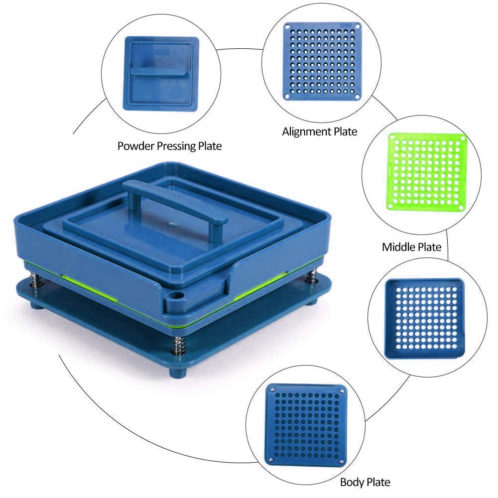
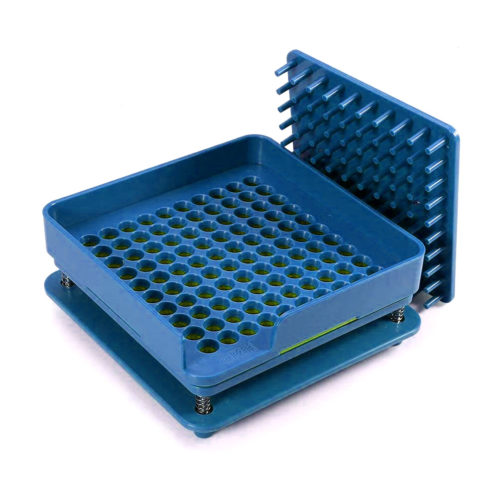
Mushroom Capsule Filling Machine
$44.93 – $74.85Fill up 100 capsules at once using this capsule filling machine. Simply insert the empty halves of your gelatin capsules, add your powders and you’re good to go!
-
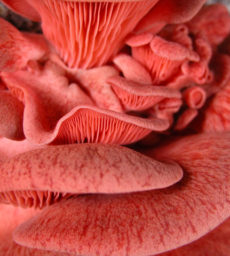
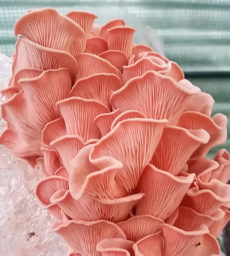
Oyster Spores
$14.95Oyster Spores
Oyster Spores Mushrooms are a fantastic and super easy mushroom to learn on and grow.
Cultivation Difficulty: Easy
Type: Edible
Substrate: Pasteurized straw, wood chips, sawdust, various grains, coffee grounds, agricultural waste, newspaper and cardboard.
Colonization/Fruiting Temperatures: 75-85F/50-75F
Available In: Culture Syringe, Culture Slant
Oyster Spores magic mushrooms are easy to grow. Check your local mushroom growing laws. Growing mushrooms for identification and taxonomy purposes? We have your spores!
In addition to the Oyster Spores spores, here are some other mushroom spores that you may be interested in reviewing: Alacabenzi mushroom magic spores, B+ mushroom spores which is also called B Plus mushroom spores, Malaysia Spores mushroom spores, PES Hawaiian mushroom spores, Ecuador spores
Furthermore check out our new Mushroom Grinder!
Mushroom Capsules found here…
The Phoenix Oyster Spores mushroom is an aggressive mushroom that fruits easily on a wide range of substrates. This is the most popular mushroom for beginners and is the top choice for introductory mushroom cultivation demonstrations.
Fresh oyster mushrooms seen at markets are most often this species. The aggressive and productive nature that makes this mushroom popular also makes it quick to decay after maturity. Harvested mushrooms may continue to grow even if refrigerated and often spontaneously form new primordia. Mushrooms should be consumed or dried within days of harvest for best quality.
These mushrooms need plenty of fresh air to develop normally. High carbon dioxide levels from mushroom metabolism will accumulate in sealed growing environments and can reduce cap size and elongate stems severely.
Oyster mushrooms, the common name for the species Pleurotus ostreatus, are one of the most common types of cultivated mushrooms in the world. They’re also known as pearl oyster mushrooms or tree oyster mushrooms. The funghi grow naturally on and near trees in temperate and subtropic forests around the world, and they’re grown commercially in many countries. Oyster mushrooms are eaten in a variety of cuisines and are especially popular in Chinese, Japanese, and Korean cooking. They can be dried and are typically eaten cooked.
What Are Oyster Spores Mushrooms?
Oyster mushrooms are beloved the world over for their delicate texture and mild, savory flavor. The mushrooms typically have broad, thin, oyster- or fan-shaped caps and are white, gray, or tan, with gills lining the underside. The caps are sometimes frilly-edged and can be found in clusters of small mushrooms or individually as larger mushrooms. Oyster mushrooms are more expensive than white button mushrooms but less so than rarer mushrooms like morels, and take little prep since they can be used whole or chopped. They are even used to make mycelium furniture and many other products.
How to Cook With Oyster Mushrooms
Like all mushrooms, oyster mushrooms act almost like sponges, soaking up any water they come into contact with. Don’t leave them sitting in water, even for the sake of cleaning them. Cultivated oyster mushrooms usually don’t need much cleaning—simply wipe off any bits here or there with a dry paper towel. A damp paper towel can be used on extra dirty mushrooms.
While you can eat oyster mushrooms raw and they can be quite pretty added to salads, they tend to have a slightly metallic flavor when uncooked. Cooking brings out their delicate flavor, turning their spongy texture into something uniquely velvety. We recommend using oyster mushrooms for cooked dishes and using button mushrooms for salads and other raw dishes.
Dried oyster mushrooms don’t need to be soaked to be rehydrated the way other dried mushrooms do—just add them to the dish, and they will soak up liquid right away
What Do Oyster Spores Mushrooms Taste Like?
Oyster mushrooms tend to have a subtle, savory anise flavor. Because their flavor is mild, without the strong earthiness of some mushroom varieties, they work well in a range of different dishes. Oyster mushrooms also take on a tender, pleasing texture when cooked. Cooking methods like frying, roasting, and grilling can retain more texture in the mushrooms while braising and sautéing makes them softer.
Oyster Spores Mushroom Recipes
One of the most popular ways to cook oyster mushrooms is to stir-fry or sauté them. This requires a preheated hot pan, a small amount of liquid, and stirring. Make sure to give them space so their moisture can cook off, that way they will truly sauté rather than steam. Serve as a side dish or use in sauces, stir-fries, pastas, risotto, or even to top toast.
Because they get so silky when cooked, oyster mushrooms respond well to braising, too. Add them to soups and stews or sauces. The mushrooms can also be grilled whole on skewers, roasted, or dredged in a crispy coating and deep-fried.
-
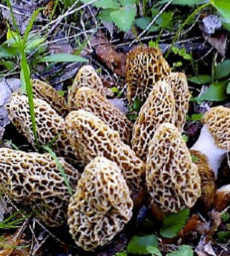
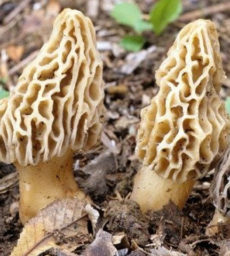
White Morel Spores (Morchella)
$14.95Morchella, the true morels, is a genus of edible mushrooms closely related to anatomically simpler cup fungi in the order Pezizales (division Ascomycota). These distinctive fungi have a honeycomb appearance, due to the network of ridges with pits composing their cap. Morels are sought by thousands of enthusiasts every spring for their supreme taste and the thrill of the hunt, and are highly prized by gourmet cooks, particularly in French cuisine. Due to difficulties in cultivation, commercial harvesting of wild morels has become a multi-million-dollar industry in the temperate Northern Hemisphere, in particular North America, Turkey, China, India, and Pakistan, where these highly prized fungi are found in abundance.
Typified by Morchella esculenta in 1794, the genus has been the source of considerable taxonomical controversy throughout the years, mostly with regards to the number of species involved, with some mycologists recognising as few as three species and others over thirty. Current molecular phylogenetics suggest there might be over seventy species of Morchella worldwide, most of them exhibiting high continental endemism and provincialism.
The genus is currently the focus of extensive phylogenetic, biogeographical, taxonomical and nomenclatural studies, and several new species have been described from Australia, Canada, Cyprus, Israel, North America, Spain and Turkey.